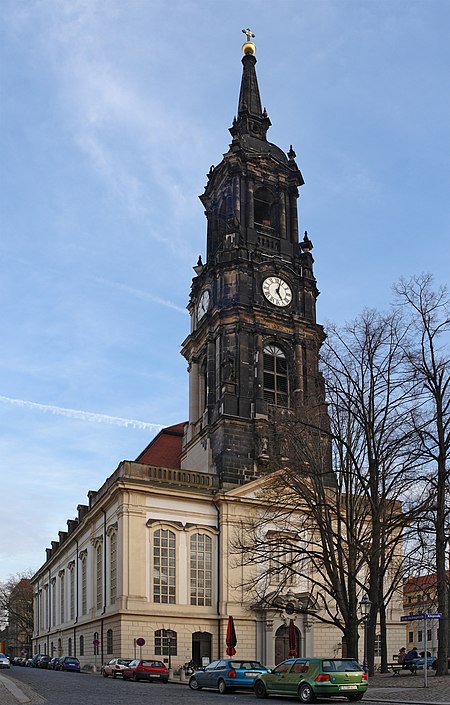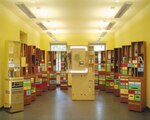Dreikönigskirche, Dresden

The Dreikönigskirche (Three Kings' Church) is a Lutheran church located in the Innere Neustadt of Dresden, Germany. It is the centre of a parish, and a community venue called Haus der Kirche. The church is a listed cultural monument of Dresden. A church has been documented as standing at the site of the Dreikönigskirche since the 15th century. The present church was built from 1732 to 1739 with designs by Matthäus Daniel Pöppelmann and with George Bähr responsible for the interior features. The church was destroyed during the bombing of Dresden in World War II and not restored until the 1980s. It served as the seat of the state parliament of Saxony from 1990 to 1993.
Excerpt from the Wikipedia article Dreikönigskirche, Dresden (License: CC BY-SA 3.0, Authors, Images).Dreikönigskirche, Dresden
Hauptstraße, Dresden Innere Neustadt (Neustadt)
Geographical coordinates (GPS) Address External links Nearby Places Show on map
Geographical coordinates (GPS)
| Latitude | Longitude |
|---|---|
| N 51.061111111111 ° | E 13.743055555556 ° |
Address
Dreikönigskirche
Hauptstraße 23
01097 Dresden, Innere Neustadt (Neustadt)
Saxony, Germany
Open on Google Maps










